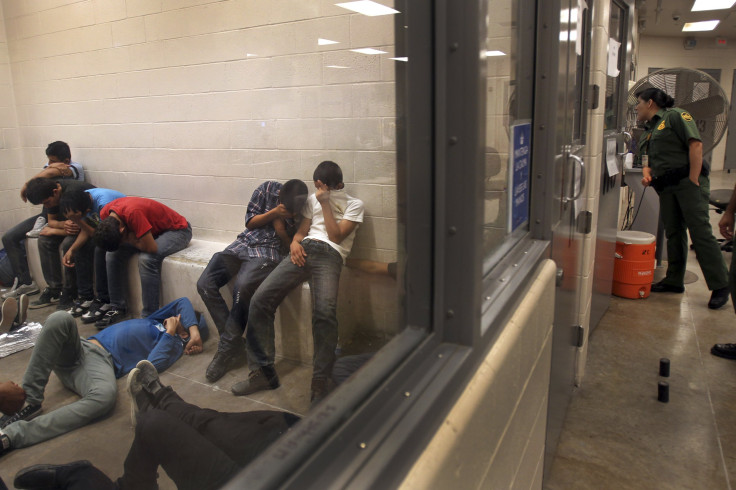Child Migrants Report Freezing In 'Icebox' U.S. Border Patrol Centers

When three Central American immigrant children testified before a congressional caucus this week to talk about why they came to the United States, their stories mentioned one peculiarity: freezing temperatures in the Border Patrol facilities where they were kept for several days.
Nobody expects a Border Patrol processing center to be luxurious, but the children’s descriptions of the freezing rooms alarmed lawmakers.
“My little sister’s lips even turned blue,” said Mayeli Hernandez, a 12-year-old girl from Honduras who testified to the panel on Tuesday through a translator. “We were shivering the whole time that we were there. We were there for four very cold days.”
Fifteen-year-old Saul Martinez, who also testified, had a similar experience. “The room was very cold. I was shivering the whole time,” he said. “There weren’t any beds. They gave us a nylon [blanket], which barely kept us warm.”
Their cases aren’t anomalies. Rep. Jan Schakowsky, D-Ill., a member of the Congressional Progressive Caucus, said that many other unaccompanied child migrants she had met all mentioned frigid temperatures during their time in Border Patrol custody.
“Why was it so cold?” she asked the room several times in bewilderment.
Reports of extreme cold in immigrant processing centers have been common enough in recent years that many immigrants -- and, according to some reports, even some Border Patrol agents themselves -- refer to them derisively as hieleras, or iceboxes. Saul used the term during his testimony on Tuesday, while explaining that agents punished children by handcuffing them outside the holding rooms, which made them even colder since they were unable to use their body heat for warmth.
“My time in the icebox was the worst experience of my life,” he said.
Immigrants’ stories of falling sick and being unable to sleep for several days because of the cold have become part of broader allegations of abuse and poor conditions in Border Patrol facilities. A group of immigration advocacy organizations filed a series of lawsuits against the Customs and Border Protection (CBP) agency last year, saying that freezing temperatures were part of “inhumane conditions” in the centers.
Border Patrol processing facilities are generally not designed to house people for long periods of time. Child migrants caught at the border receive medical screening and have their information recorded at the processing centers, and ideally spend no more than 12 hours there before being transferred to a Health and Human Services-sponsored shelter. But with such large numbers of migrants coming across the U.S. border in recent years, hundreds of children now spend several days or weeks in makeshift processing centers. Many children have mentioned scant amenities: two sandwiches a day to eat; sleeping in large, lit rooms with hundreds of other children; and thin, nylon blankets. But none of this explains the many accounts of freezing-cold rooms.
The CPB, which oversees the Border Patrol, has not offered any acknowledgement or explanation for complaints about temperatures. CBP representatives also did not immediately respond to requests for comment.
The Department of Homeland Security’s Office of the Inspector General is conducting an investigation into allegations of abuse in Border Patrol facilities. In a preliminary report, it said that temperatures were “inconsistent” among the centers they observed on unannounced visits. In some instances, the report said, Border Patrol agents were not able to control the thermostats.
But many advocacy organizations, who have been tracking immigrants’ stories about the hieleras for several years, say that cold temperatures are a deliberate strategy.
“We use this same mentality in our prison system,” said Jessica Jones, Children and Youth Policy Advocate at Lutheran Immigration Refugee Services, who testified before the caucus on Tuesday. “I think it’s a way of subduing, is what we’ve been hearing from Border Patrol -- it’s how you can subdue the people that are being held.”
Jonathan Ryan, executive director of Refugee and Immigrant Center for Education and Legal Services, gave the panel a different explanation.
“The reason that they give you, that I’ve heard, is that they keep it at this temperature in order to prevent the spread of disease,” he said. Ryan said that rationale helped promote the idea that migrants were “disease-spreading.”
But, he added, “No hospital that I’ve ever been in has been that cold.”
© Copyright IBTimes 2024. All rights reserved.






















